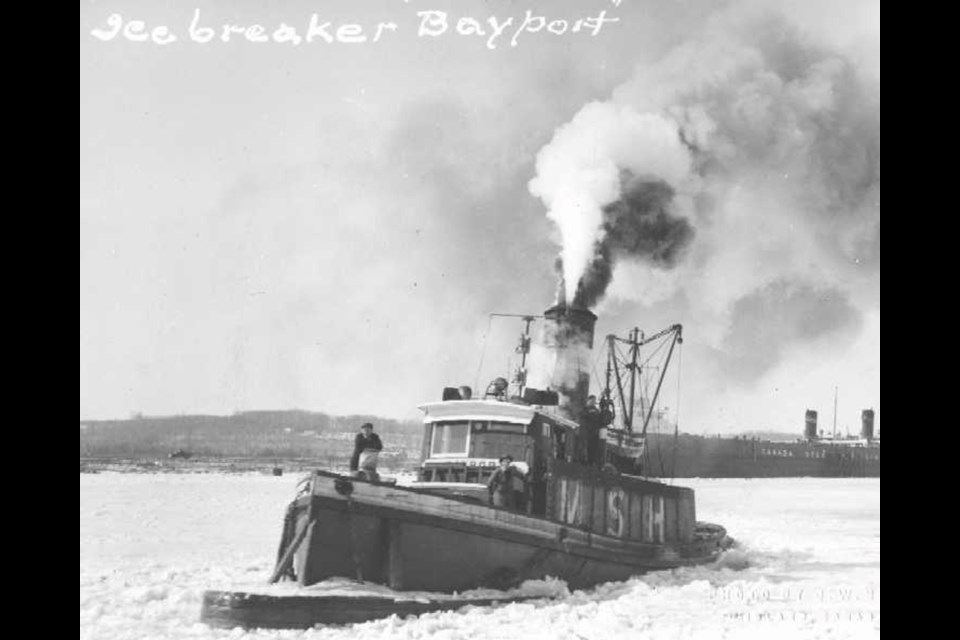Watching the icebreaker make its way through the bay into Midland harbour is a sign of spring as reliable as crocuses.
This yearly spectacle unites ‘shippers — as boat enthusiasts are called — for a few weeks in the spring as the large ships come through the bay making the area and its waters safe again.
Every year in March and April, icebreakers of varying shapes and sizes have helped clear safe passage for ships in spring. While the thickness of the ice changes every year, according to Fisheries and Oceans Canada, Midland always has a minimum of one to two feet, with some colder years resulting in over two and a half feet of ice in the harbour.
Historically, this is what has been reported in archival newspaper clippings from as far back as 1927. However, in 1943 one headline said Midland had its “Hardest Winter since 1907.” Then-Port Captain C.E. Scott said he encountered more than 28 inches of solid ice while ice-breaking noting, “sometimes there is ice eight=feet deep where it has been broken up and packed down,” as quoted in the Free Press Herald March 24, 1943.
Considering the original way ice was broken was by hand with axes and picks, let us be glad for the modern creations of engines that use sheer brute force to push their way through the ice. The earliest recorded ice-breaking ship was from the 14th century in Belgium where a ship was used to break ice in a moat in 1383 in Bruges.
More recently, you may have seen the CCGS Samuel Risley on the bay in Midland and the area. The icebreaker can continuously break one foot of ice at 3 knots, and it certified to break two feet of ice.
Midland can have thicker ice due to the westerly winds, and its geographical location.
According to the CCGS Risley’s commanding officer Marc-André Boucher, the ice was so thick in 2014 that the Coast Guard deployed another icebreaker, CCGS Pierre Radisson, to help make quick work of dismantling the ice sheet.
The Coast Guard helps clear ice in the Georgian Bay and Great Lakes both to escort a ship out of harbour and to perform a breakout when the ice is no longer stable for winter activities.
Icebreaking has a rich history in this area with one local having designed a special ship bow for the purpose.
Captain Edward Francis Burke owned and operated a fleet of tug boats with his brothers Fred and David. Burke Towing and Salvage started in 1913, and Capt. Burke designed a bow used in the fleet of tugs, and on his own tug called the Strathbogie, which often came to the rescue of many a boat stranded by freezing conditions in the area.
As reported in the County Herald in 1926, the Strathbogie icebreaker freed a government streamer called the Grenville with 13 lighthouse keepers and their families aboard, which was trapped by ice near Sawlog bay.
According to Capt. Burke’s obituary, the Strathbogie crossed the Atlantic three times.
While the icebreaker came in mid-March this year due to warmer winter conditions that are increasing year over year as the climate changes, breaking ice mid-March broke records back in 1956.
According to a report in the Free Press from 1956, American icebreaker USCG Mackinaw arrived on March 18, beating the previous record set in 1953 by 10 days.
No matter how thick the ice, or how early the breakout, Fisheries and Oceans Canada helps keep our waters safe for commercial and recreational vehicles.
To learn more about icebreaking, safe ice, and the vessels that accomplish the task visit the Canadian Coast Guard.



